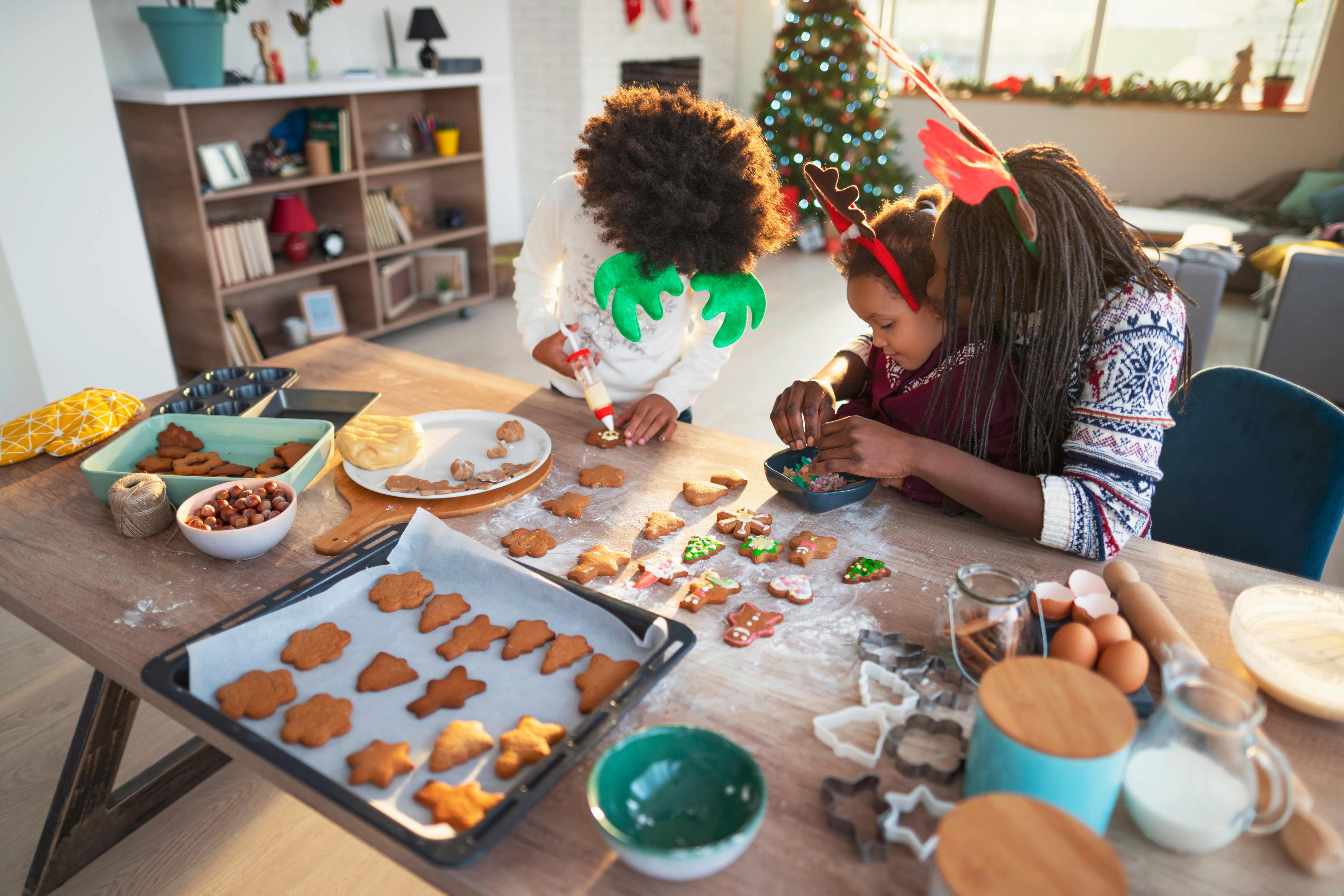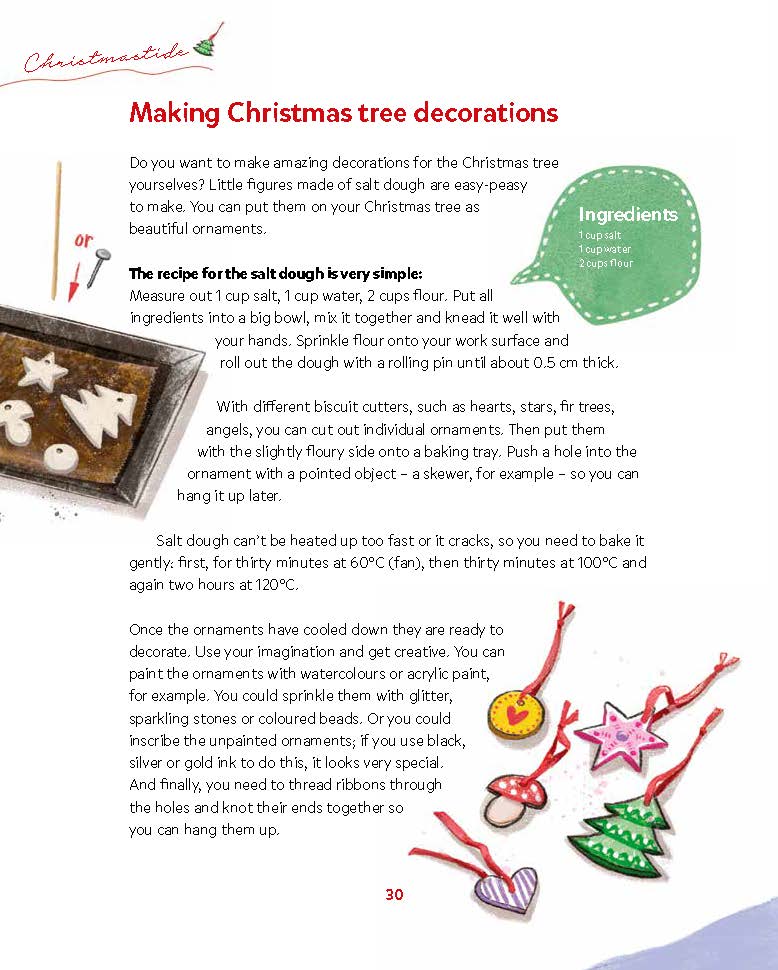The Christmas tree is an essential part of our modern Christmas. I’ve looked it up: the earliest records of putting up Christmas trees in living rooms are from 1605. The tradition, at the beginning, was restricted to public buildings and wealthy households only, since fir trees were rare back then and thus extremely expensive. In the mid-nineteenth century, the Christmas tree made its way into all living rooms and conquered the world.
What makes a Christmas tree a Christmas tree? Traditionally, Christmas trees are decorated with glass baubles of all different colours, and candles or chains of lights. In many places, stars, sweets and wooden figures are also part of the decoration. The tree receives an artfully ornamented top in the form of a star or an angel.
Strictly speaking, a Christmas tree shouldn’t be put up until Christmas Eve. In shops and cities, however, Christmas trees are already to be found during the Advent season. In our own homes, though, it should really be the day of Christmas Eve that the tree shines in all its glory.
The tree is usually taken down around the feast of the Epiphany, which we celebrate on 6th January. In the Catholic Church, the Christmas season ends with the first Sunday after the Epiphany. On that day, we celebrate the feast of the Baptism of the Lord. That’s also when the fir trees and cribs are taken down from churches.
Making Christmas tree Decorations
Do you want to make amazing decorations for the Christmas tree yourselves? Little figures made of salt dough are easy-peasy to make. You can put them on your Christmas tree as beautiful ornaments.
The recipe for the salt dough is very simple:
Measure out 1 cup salt, 1 cup water, 2 cups flour. Put all ingredients into a big bowl, mix it together and knead it well with your hands. Sprinkle flour onto your work surface and roll out the dough with a rolling pin until about 0.5 cm thick.
With different biscuit cutters, such as hearts, stars, fir trees, angels, you can cut out individual ornaments. Then put them with the slightly floury side onto a baking tray. Push a hole into the ornament with a pointed object – a skewer, for example – so you can hang it up later.
Salt dough can’t be heated up too fast or it cracks, so you need to bake it gently: first, for thirty minutes at 60°C (fan), then thirty minutes at 100°C and again two hours at 120°C.
Once the ornaments have cooled down they are ready to decorate. Use your imagination and get creative. You can paint the ornaments with watercolours or acrylic paint, for example. You could sprinkle them with glitter, sparkling stones or coloured beads. Or you could inscribe the unpainted ornaments; if you use black, silver or gold ink to do this, it looks very special. And finally, you need to thread ribbons through the holes and knot their ends together so you can hang them up.
 These instructions are extracted from our book The Church Year for Children. Help children actively discover the church year, with child-friendly facts, explanatory illustrations, and creative suggestions on how to organise these special times for each festival and each year.
These instructions are extracted from our book The Church Year for Children. Help children actively discover the church year, with child-friendly facts, explanatory illustrations, and creative suggestions on how to organise these special times for each festival and each year.
For more fun Catholic activities for kids and to help them learn about the liturgical year, order your copy of The Church Year for Children.


